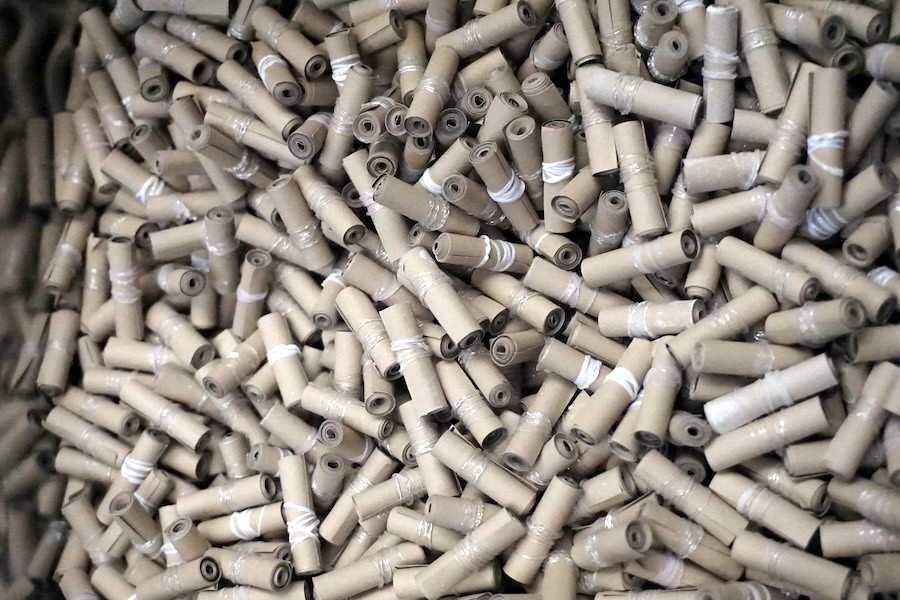
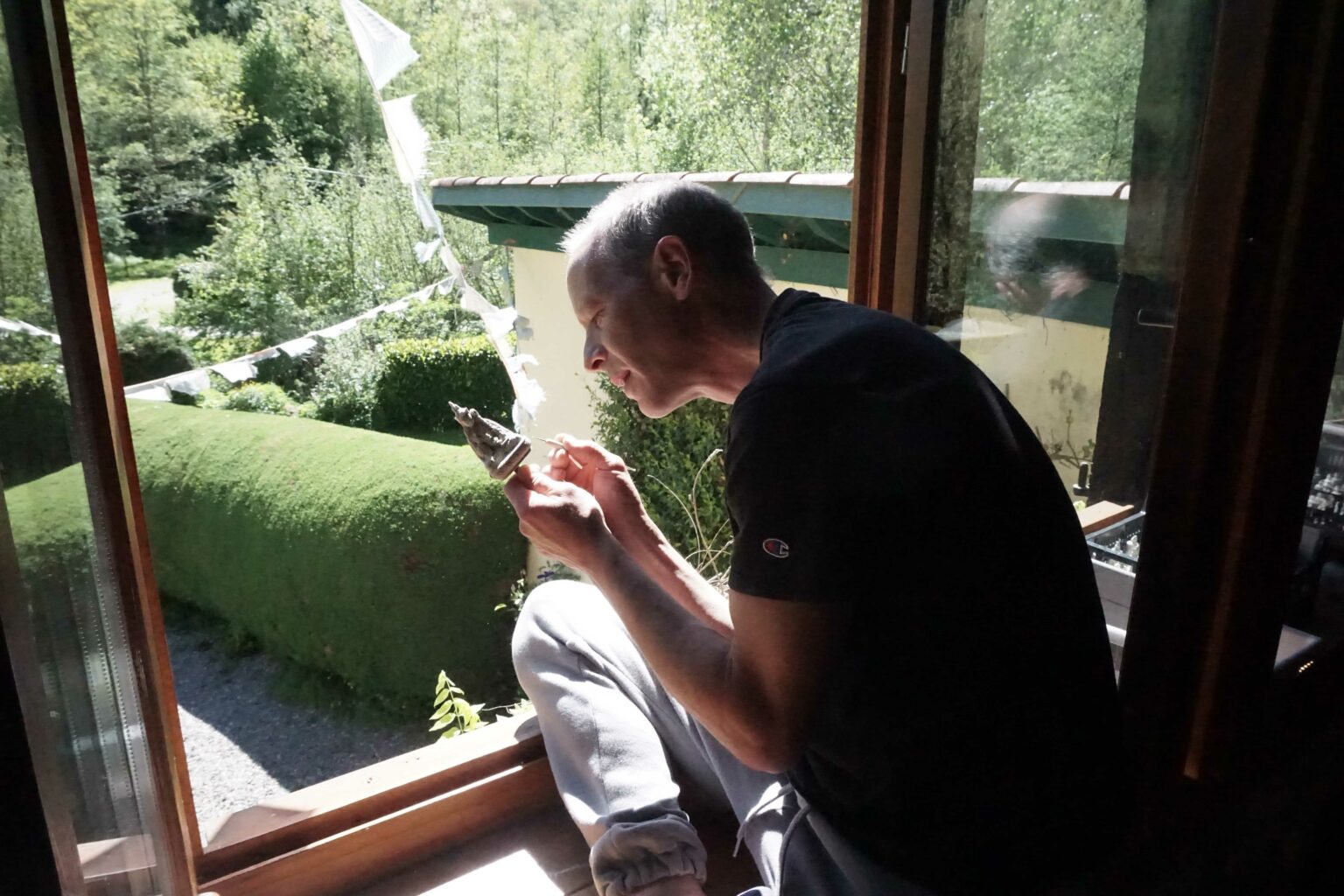
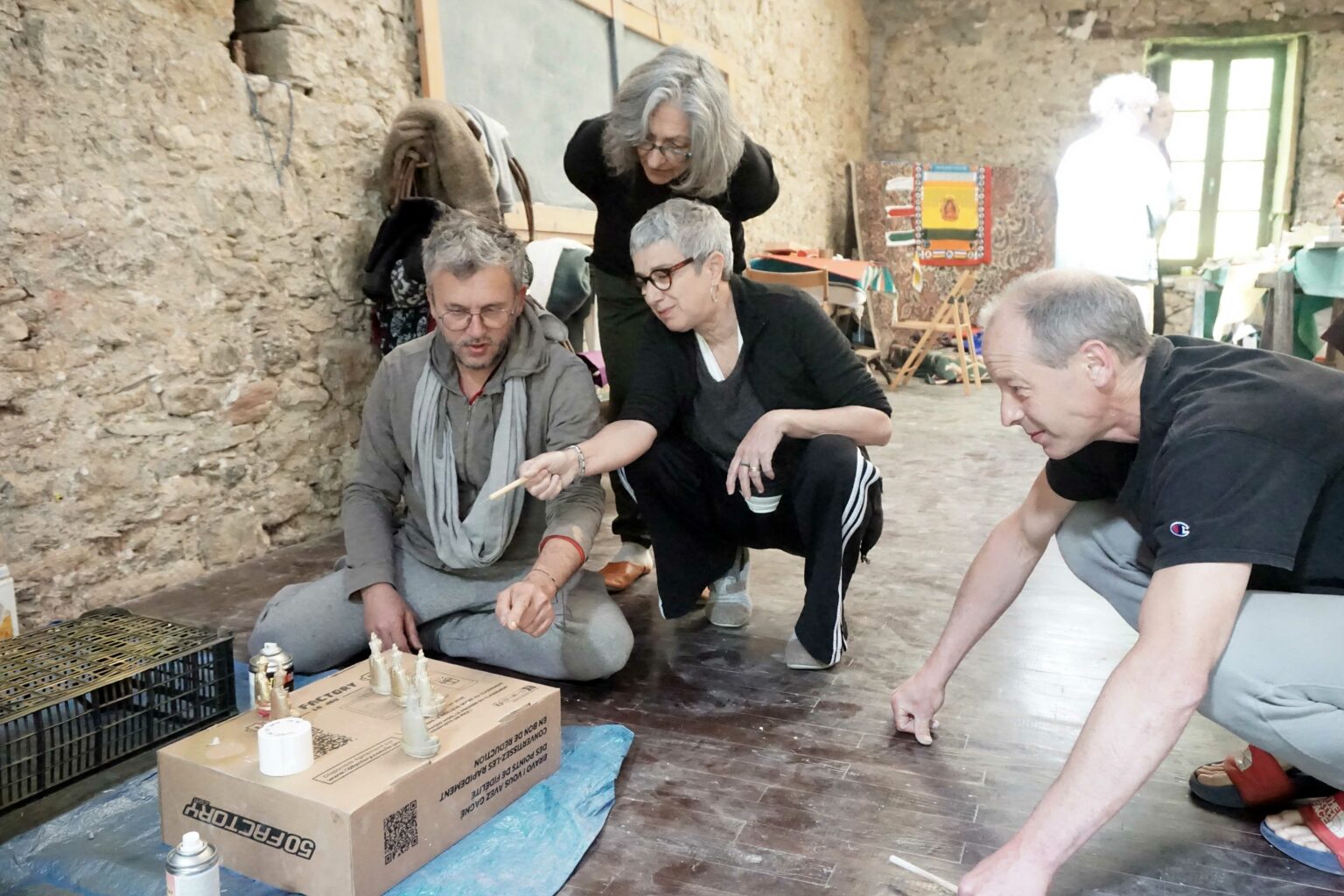

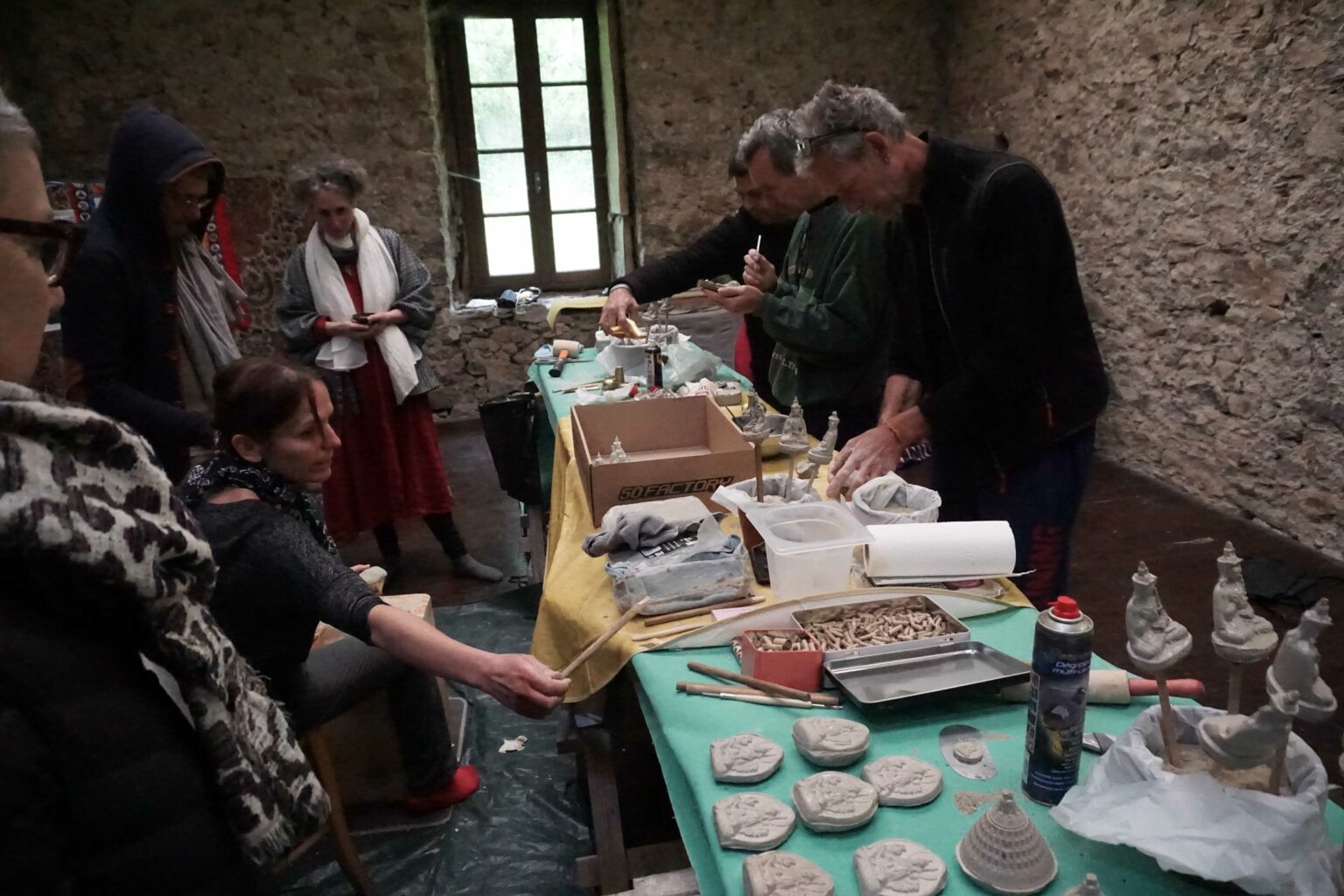
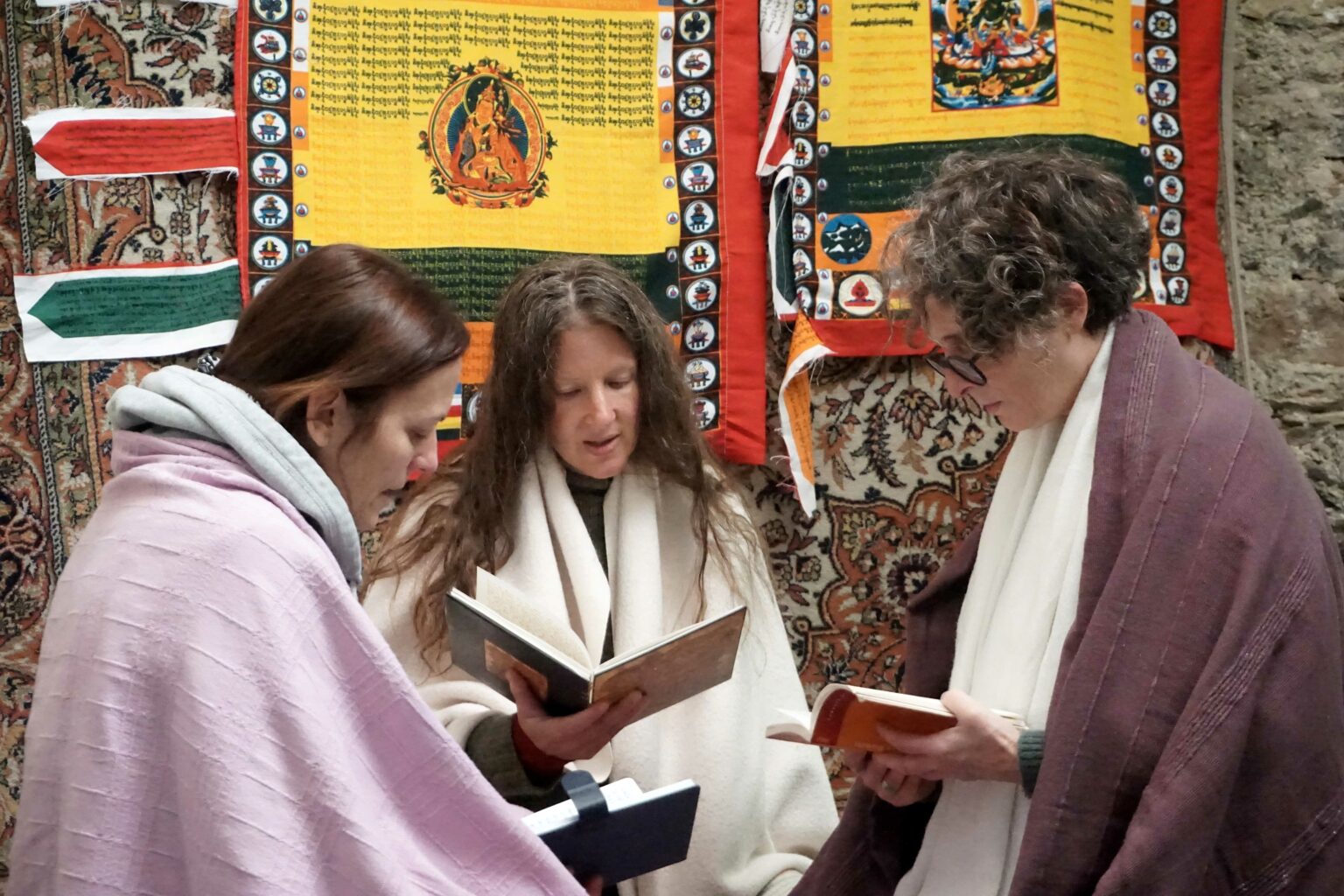
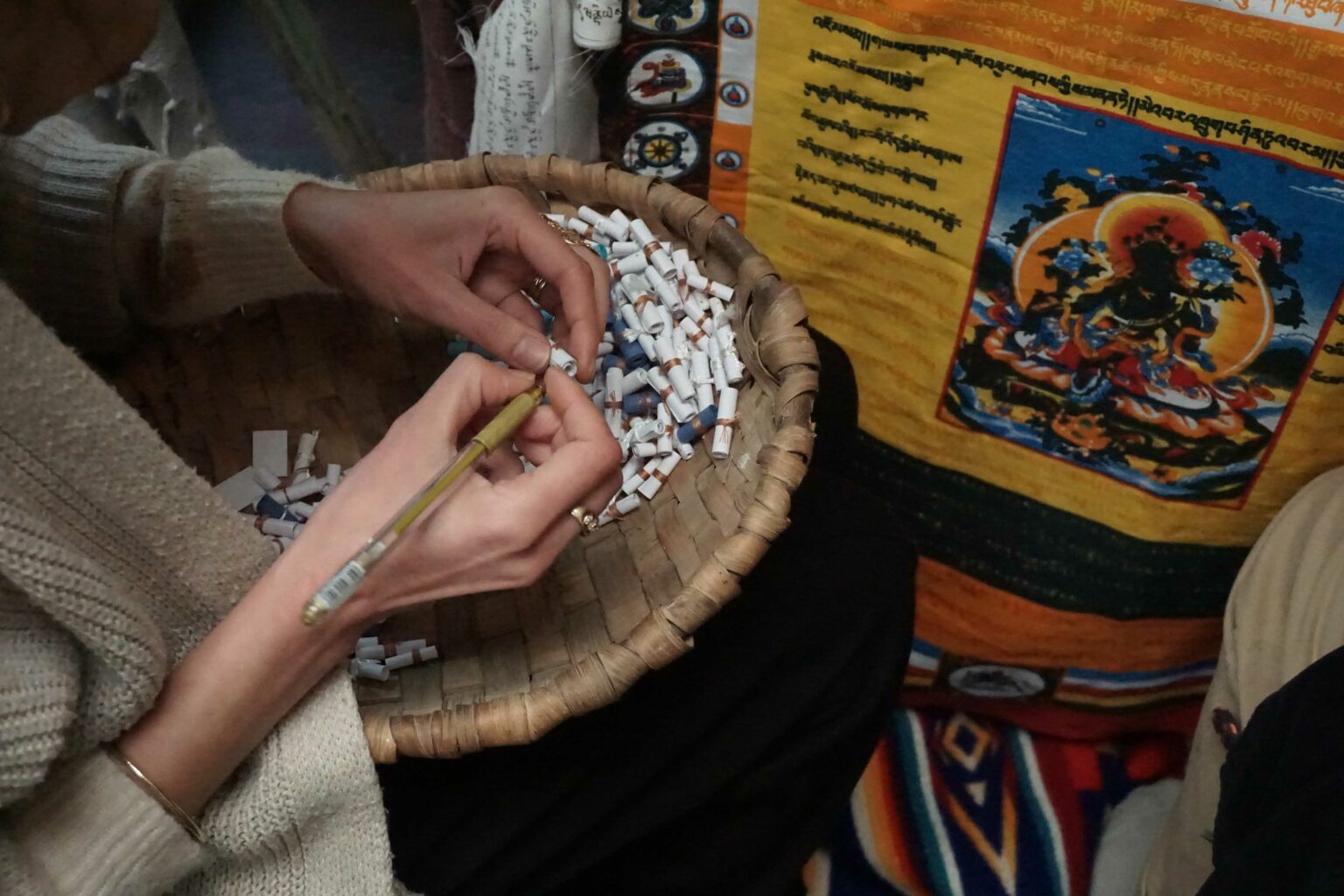

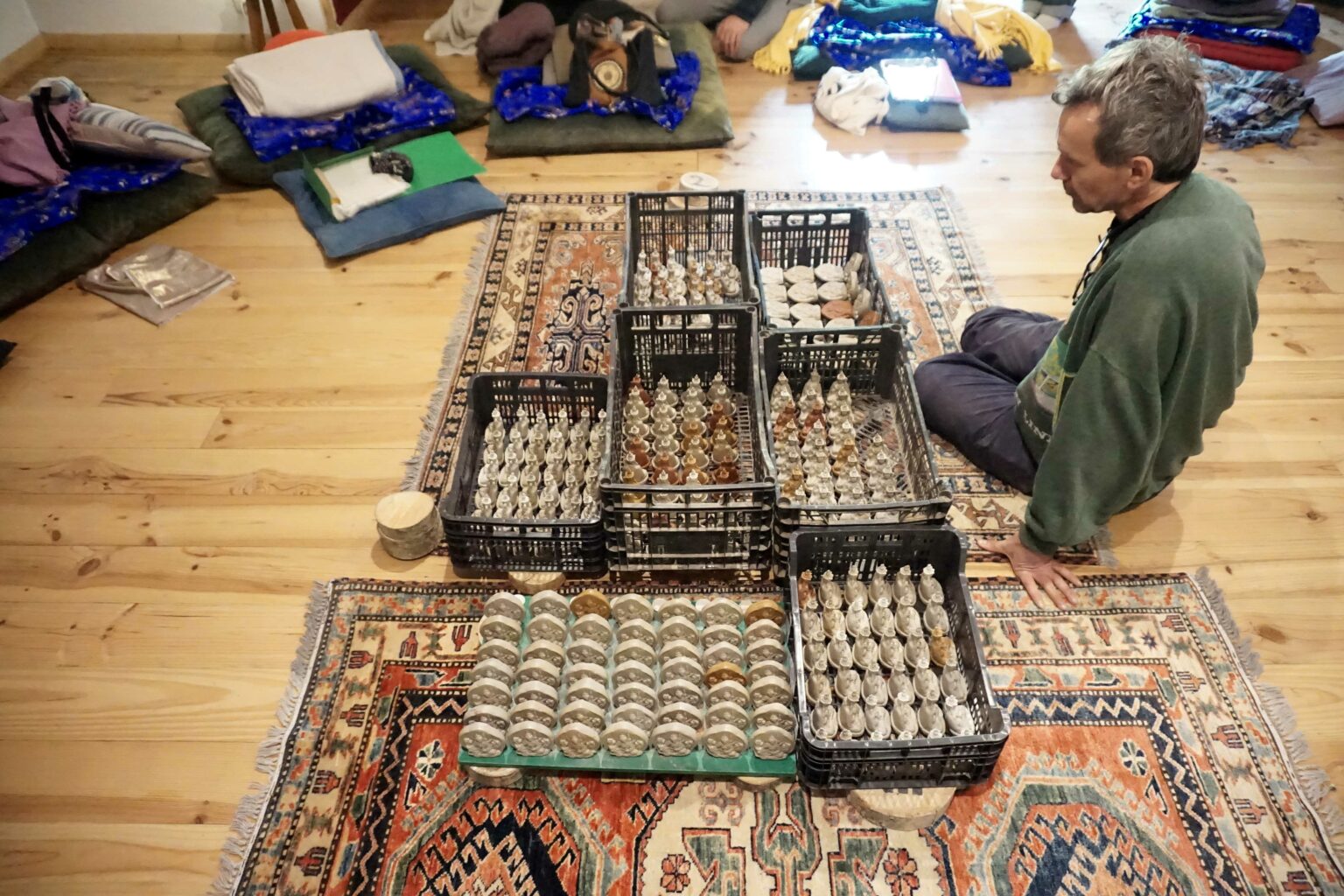
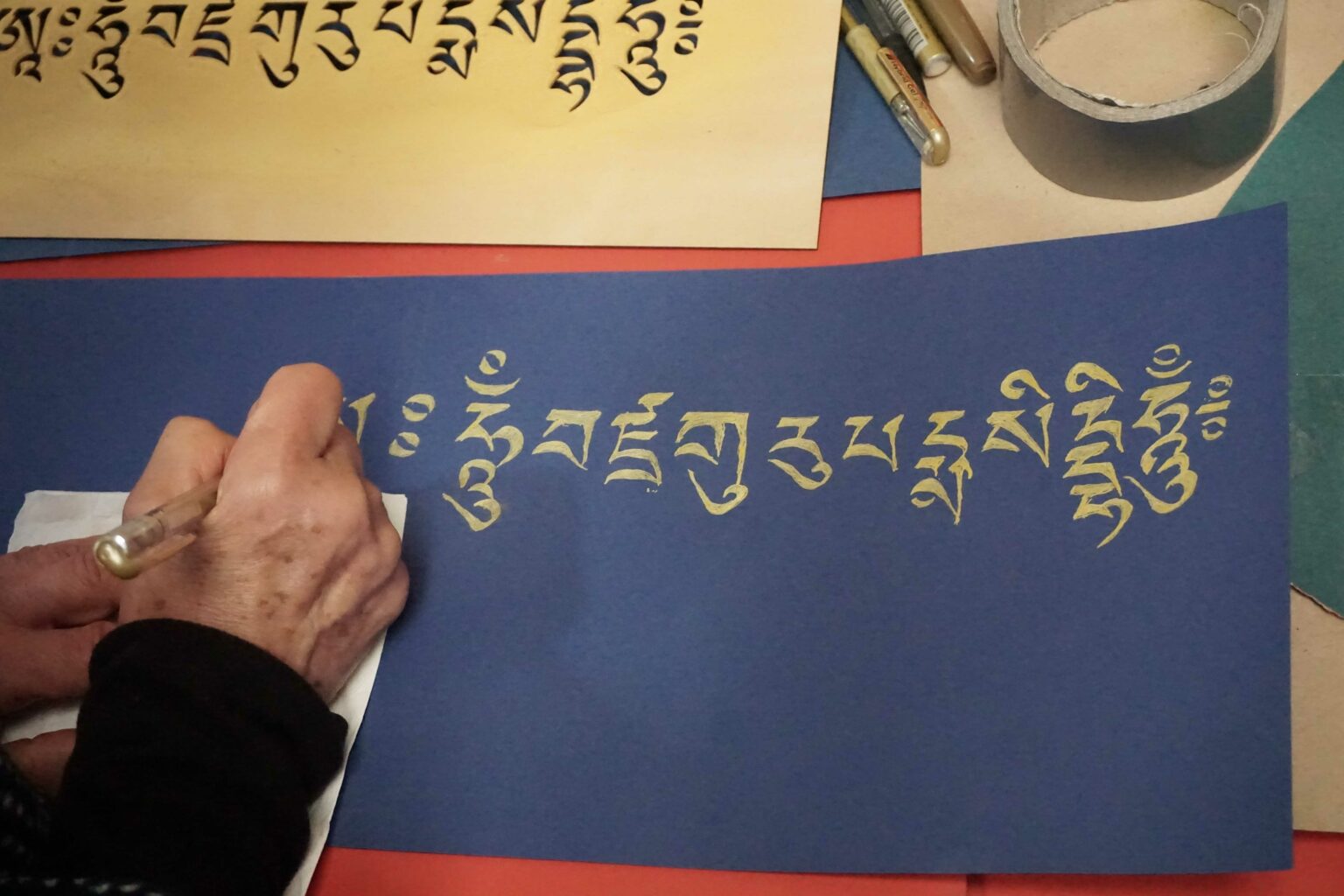
Tsatsa, transliterated from Sanskrit, is the general term for molded clay statues in Tibetan Buddhism.
Clay is the raw material for tsatsa, and those made simply of clay are commonplace. Precious materials such as gold, silver, pearls, precious stones, coral, agates, etc. can also be added. There is, however, one type of tsatsa that is much more religious and sacred: tsatsa whose clay includes the ashes of a trulkou. At the top of the list is the “butsa”, made from clay mixed with the blood and body fluid of a trulkou, salt and special Tibetan medicines. Only the few trulkus who can be placed on a stupa, such as a Dalai Lama and a Panchen Lama, can supply butsa elements. Before being placed on a stupa, the trulku’s remains must undergo special treatment. During the process, salt and Tibetan herbs are used to absorb blood and body fluids from the remains. Tsatsa impregnated with blood, salt and these medicines are a priceless treasure. From the believers’ point of view, these tsatsa are able to cure all illnesses and resist the evil spirit.
The tsatsa is a sacred object to which Tibetans entrust their will. It can be found just about anywhere: on sacred mountains, in temples to gods and monasteries, near rivers and lakes, in the middle of a road or at a crossroads. A niche, called a caitya, is built to accommodate the tsatsa. Some tsatsas are placed either inside a large Buddha statue or in the center of a stupa. Others are easily transported and serve as talismans. In short, the tsatsa, the mound of mani stones and the prayer banner are considered by Tibetans to be objects of worship for a happy life.
Source: Collection Tibet – THE USES AND COUTUMS OF TIBET
Translated with DeepL.com (free version)




